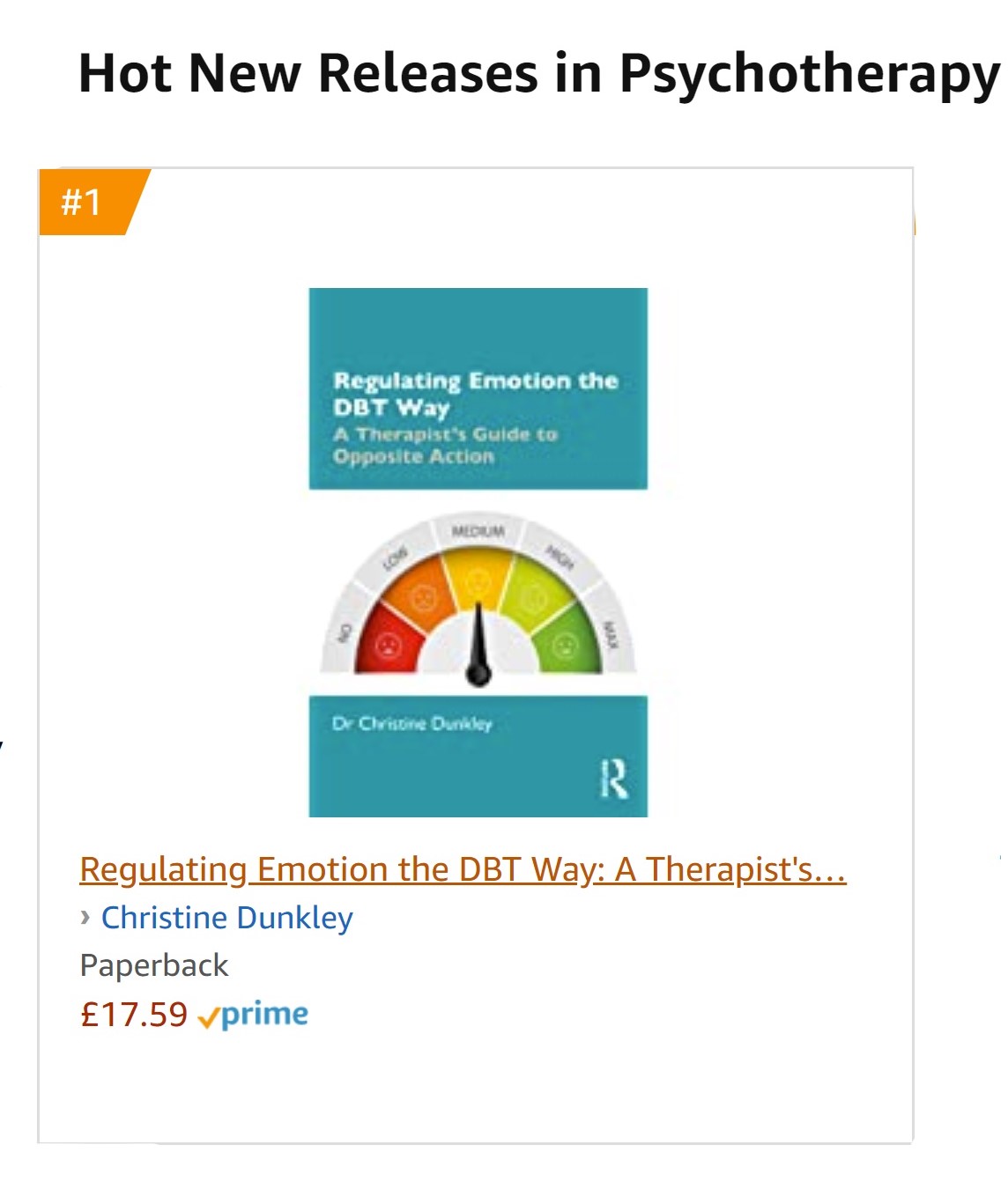 The emotion of shame is one of the social emotions designed to keep us as part of a social group, as during evolution the protection of others was a big factor in our survival. Shame occurs when you have committed an act that you predict would be against the norms or values of your group, to such an extent that if the group knew about it there is a risk that you would be ejected from the tribe. Unlike guilt which prompts us to try to repair the damage, the emotion of shame has an action urge of hiding or concealing one’s crime.
The emotion of shame is one of the social emotions designed to keep us as part of a social group, as during evolution the protection of others was a big factor in our survival. Shame occurs when you have committed an act that you predict would be against the norms or values of your group, to such an extent that if the group knew about it there is a risk that you would be ejected from the tribe. Unlike guilt which prompts us to try to repair the damage, the emotion of shame has an action urge of hiding or concealing one’s crime.
This is an excellent protective instinct. If you have done something hideous and you don’t think you will escape the wrath of your peers, the behaviour of keeping a low profile could allow any tribal heat around your transgression to die down. Hopefully everyone will forget about the incident and you will be assimilated back into the social structure when you eventually surface.
It makes sense that an emotion that served such an important life-or-death function would have an accompanying sensation that feels pretty horrid. Shame is particularly painful and so it should be – so that there was no risk of you wandering out nonchalantly into a crowd that is baying for your blood.
The components of the emotion are body heat (burning with shame) an urge to hide from view which leads to head hanging and shrinking back, a subservience to others and self-accusatory thoughts. Unlike sadness where muscles are flaccid, in shame it is possible to note a certain amount of flight-tension, i.e. the muscles retain a readiness to run or push others away. Think of trying to comfort someone who is very ashamed, they may push you off in a way that sad people are less inclined to do.
So we can distinguish shame from related emotions like guilt or sadness. Occasionally shame can elicit defiance as an internal defence, so it can mimic anger, but the tell-tale signs are in the direction of motion – the angry person is more likely to approach others, the defiant person will stand still.
Professor Paul Salkovskis has suggested to ask clients, “What kind of people feel shame?” They have often failed to register that it is an emotion felt by people who have a conscience. Psychopaths and hardened criminals rarely exhibit shame, although there is also an argument that they have just become more practiced at defending against it.
The compassionate mind theory of Professor Paul Gilbert suggests that many clients have not developed the part of their brain that can show compassion to themselves, and need to be helped to do so. People with this problem may believe that the pain of their shame is well-deserved.
In taking a behavioural approach to reducing shame we first want to be mindful. In the presence of a shame-inducing trigger clients can be only too quick to lump together anything and everything that they have ever felt ashamed of. So when treating a current episode of shame it is vital to ascertain what exactly set it off. Questions like, “what is the latest thing that made you feel ashamed?” are helpful. You simply cannot treat shame in a global way, you have to teach the client to work incident by incident.
Try to establish if their current episode of shame is one of the following
- I have committed an act where most people would reject or judge me for it if they knew (justified shame)
- I have committed an act that if someone else did it wouldn’t seem shameful, but I am sensitive about it (unjustified shame)
- I perceive that others are judging me for a failure to do or achieve something in comparison with them (potentially justified shame the client needs to assess whether being part of this group is important)
- I have done something where a degree of guilt is justified, but I just react with such intensity it turns into shame. (shame that is unjustified by degree)
- I was an innocent party to or victim of another’s actions but feel shame about the event (Unjustified shame by association)
Clients need to learn these types of shame, as stepping back from the incident in question to classify it will usually take a little of the heat out of it.
Some therapists hold that shame is never warranted, but I disagree, having consulted to teams that deal with patients who have committed very serious crimes such as murder. If such clients are ever released and hear taunts or threats in public the urge to hide could save their life. This is especially true if they have been rehabilitated with a fresh identity, being in danger of revenge attacks. It is also realistic for clients who have past self-harm or drug habits to assume that some groups might reject them and it is wise for them to be discerning if the social stakes are high.
When treating shame the therapist MUST ascertain the nugget of truth in the patient’s position. Saying to clients, “you have absolutely no reason to feel ashamed,” is often invalidating – because for some reason they do feel it. So the therapist is looking to find one sentence, just one, that sums up succinctly the reason that the client feels shame, but – and here is the art – it is tempered with more reasonable language. So the client who has had her child taken into care because of her self-harming might be taught to say, “I would prefer that I had not self-harmed because of the consequence of having my child removed, it does not fit my values to live separately from my child” the therapist will know that the sentence is correct because the client says, “yes, that is exactly the reason I feel ashamed,” but they can also hear within that message the conscientiousness that Salkovskis is referring to. The client is encouraged to say this reasonable statement in a non-shamed posture. So head up – firm voice, look the therapist right in the eye and say it. If it doesn’t feel quite right to the client change the wording and add bits on until it hits the exact spot.
Here is my top tip, if the statement starts to sound defiant or aggressive coach some muscle relaxation, then get them to stand up straight and say it again. There is a fine line in the muscle tone between making a non-self-shaming summary and being defiant, but defiance is a safety behaviour so it will prolong shame. Defiance is not needed if shame is already waning. You are aiming to get them to make a simple declaration of their position in a calm but convincing way. Not cowering or cringing, not damning themselves or others. Just a straight-down-the-line statement of fact. Sounds simple, but is amazingly powerful.
This mechanism of change here is one that Professor Marsha Linehan would call ‘opposite action’, a bio-neurological strategy based on the assumption that if you take action incompatible with an emotion the mixed messages back to the brain will reduce the intensity of it. In this case, an upright (but not totally rigid) posture, a direct gaze, a calm declaration made with complete conviction in a strong (but not aggressive) voice-tone are all actions incompatible with shame. It might also be necessary to cool the person’s body temperature, take off a cardigan or jacket, and suggest they have a cold drink. All these factors taken together will inhibit the brain’s shame-induction system in that moment.
For clients who are shameful about some past incidents my advice is to deal with the after-effects first, before doing any exposure treatment. Having some confidence that they can reduce a ‘shame attack’ can help them to withstand recounting the actual incident at some stage in the future. So usually in these cases the client gets shameful when he or she encounters a trigger that sets of the memory. In the example we have already used the client sees people in the supermarket with their children coming up to Christmas and regrets not being with her child, Stick with what she can say to herself in the supermarket, as above, (though she doesn’t have to say it out loud, she can still make the declaration in her thoughts). Only when she can confidently manage this type of trigger is she ready to go back in therapy to the incidents around the time when the child was taken into care.
Shame by association when the client is totally innocent is hard to shift but it is helpful to acknowledge that the discomfort felt in the body does not signify guilt, but rather demonstrates a complete rejection of the act itself. Sometimes the client has been encouraged to feel shame. The statement for this client will be something like, “I feel discomfort when reminded of this event because the action itself was so completely against my own values. This feeling is not a sign of guilt, but comes from my firmly held belief in what is right and wrong.” Head up, confident pose, firm but calm tone of voice, say it with conviction, no flinching. Change the wording until it feels correct to the client.
The client may say, “But I feel shame all the time”, and this is where mindfulness is key. Teach the client that each moment unfolds differently, and if you take care of the moments the hours will take care of themselves. It is wise to keep some shame if the shame is justified, as a warning not to repeat the same behaviour again. Remember that shame is a skill in the repertoire of conscientious people, but in excess is extremely damaging to our self-esteem.
Paul Gilbert will be doing a one-day workshop for us on compassion-focussed therapy in London on Jan 8th 2016. Please go to our Guest Speaker page to see details.



 When you hear the words ’emotion regulation, what do you think of? 99 times out of 100 people say, “Reducing a strong feeling.” That certainly comes into it, but then couldn’t that process be better described as ’emotion reduction’? Why did Marsha Linehan call the skill emotion regulation? Because she wanted to help people move away from seeing emotion (even extreme emotion) as a problem.
When you hear the words ’emotion regulation, what do you think of? 99 times out of 100 people say, “Reducing a strong feeling.” That certainly comes into it, but then couldn’t that process be better described as ’emotion reduction’? Why did Marsha Linehan call the skill emotion regulation? Because she wanted to help people move away from seeing emotion (even extreme emotion) as a problem.
 At one time it seemed like exposure protocols were to be consigned for the few cases that therapists see each year of specific phobias – fear of spiders, or flying where the logic of a graded exposure program is self-evident. Curiously though, even in the treatment of OCD where exposure and response prevention (ERP) is the NICE recommended treatment, therapists (anecdotally) seem reluctant to go down that route. There is something that perhaps feels unkind or scary in taking people directly towards the thing they fear – particularly if you are a person driven to do a job by your desire to alleviate suffering, why ramp it up if there is another way to go? My friend and colleague
At one time it seemed like exposure protocols were to be consigned for the few cases that therapists see each year of specific phobias – fear of spiders, or flying where the logic of a graded exposure program is self-evident. Curiously though, even in the treatment of OCD where exposure and response prevention (ERP) is the NICE recommended treatment, therapists (anecdotally) seem reluctant to go down that route. There is something that perhaps feels unkind or scary in taking people directly towards the thing they fear – particularly if you are a person driven to do a job by your desire to alleviate suffering, why ramp it up if there is another way to go? My friend and colleague  As a behaviourist I am a bit of a nerd when it comes to ‘controlling variables’, or in other words identifying what factors in any given moment made X do Y. It is really only possible to do this if we can define the problem in a behavioural way.
As a behaviourist I am a bit of a nerd when it comes to ‘controlling variables’, or in other words identifying what factors in any given moment made X do Y. It is really only possible to do this if we can define the problem in a behavioural way.
 I often get asked how to handle dissociation when it occurs in therapy. As a behaviourist it is good to ask, “What is the behaviour that I am labelling as dissociation?” as there are a number of different forms. The general theme is that the person has detached their attention from the room and usually has turned it inwards. Occasionally the client can enter a ‘fugue state’ where they simply lose conscious awareness whilst retaining some functioning e.g. enough to travel by bus or train. However this is rare.
I often get asked how to handle dissociation when it occurs in therapy. As a behaviourist it is good to ask, “What is the behaviour that I am labelling as dissociation?” as there are a number of different forms. The general theme is that the person has detached their attention from the room and usually has turned it inwards. Occasionally the client can enter a ‘fugue state’ where they simply lose conscious awareness whilst retaining some functioning e.g. enough to travel by bus or train. However this is rare. Therapists are programmed to listen, and helping clients to feel heard is at the heart of what we do. There are times, however, when something seems to go wrong with this process, and although the therapist has applied the most careful attentiveness, validation and change suggestions the client wants to recount the same information over and over again. Therapists report that too much going over the same ground feels wrong, they can sense it is not helping and they feel stuck in a loop. As a behaviourist I am going to ask, “What is reinforcing this client behaviour?”
Therapists are programmed to listen, and helping clients to feel heard is at the heart of what we do. There are times, however, when something seems to go wrong with this process, and although the therapist has applied the most careful attentiveness, validation and change suggestions the client wants to recount the same information over and over again. Therapists report that too much going over the same ground feels wrong, they can sense it is not helping and they feel stuck in a loop. As a behaviourist I am going to ask, “What is reinforcing this client behaviour?” The emotion of shame is one of the social emotions designed to keep us as part of a social group, as during evolution the protection of others was a big factor in our survival. Shame occurs when you have committed an act that you predict would be against the norms or values of your group, to such an extent that if the group knew about it there is a risk that you would be ejected from the tribe. Unlike guilt which prompts us to try to repair the damage, the emotion of shame has an action urge of hiding or concealing one’s crime.
The emotion of shame is one of the social emotions designed to keep us as part of a social group, as during evolution the protection of others was a big factor in our survival. Shame occurs when you have committed an act that you predict would be against the norms or values of your group, to such an extent that if the group knew about it there is a risk that you would be ejected from the tribe. Unlike guilt which prompts us to try to repair the damage, the emotion of shame has an action urge of hiding or concealing one’s crime.